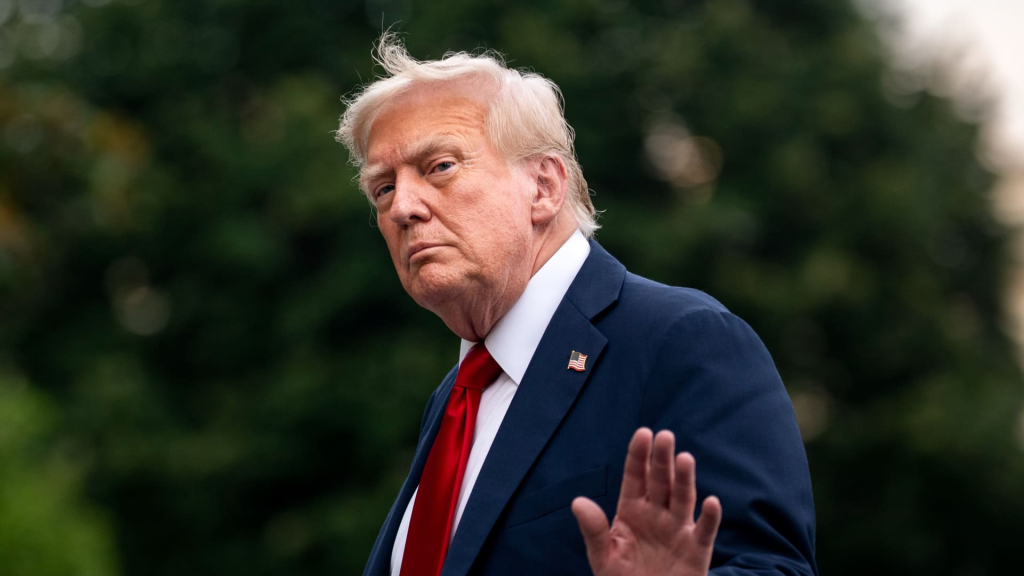The announcement by U.S. President Donald Trump of a forthcoming 30% tariff on imports from the European Union, set to take effect on August 1, has prompted a flurry of activity among EU officials.
In response, European leaders are expressing their intent to negotiate a resolution with the U.S. before the new tariffs are implemented. The EU has also opted to postpone countermeasures that were scheduled to be activated this week, indicating that they are preparing additional retaliatory strategy should negotiations falter.
EU Trade Commissioner Maros Sefcovic addressed the situation on Monday, conveying that the letter announcing the tariffs was met with “regret and disappointment,” particularly given the progress made in ongoing discussions.
Sefcovic reiterated the EU’s commitment to pursuing a negotiated settlement, while also preparing for any potential outcomes that might arise, including counteractions. He indicated intentions to engage with U.S. representatives later that day.
“I cannot imagine walking away without genuine effort,” Sefcovic remarked.
The ticking clock, with less than a month until Trump’s deadline, puts added pressure on the EU to devise a strategy to avert the impending tariffs or face the risk of an escalating trade situation.
EU under pressure
Amidst the EU’s determination to secure a favorable deal, experts warn that the proposed 30% tariff presents a new set of challenges for the bloc comprising 27 nations.
Alicia Garcia-Herrero, a senior fellow at Bruegel and chief economist for Asia Pacific at Natixis, shared her insights with Finance Newso’s “Europe Early Edition,” stating, “It’s very bad news for Europe.” She emphasized that Trump is exerting pressure on the commission to negotiate a more favorable arrangement.
Similarly, Carsten Brzeski, global head of macro at ING, along with Inga Fechner, a senior economist focusing on global trade, characterized Trump’s communication as a strategic move to heighten the stakes in ongoing negotiations.
They noted, “Trump’s letter to the EU is not a love letter but also not a hate letter. It’s a letter to increase pressure in the ongoing negotiations.”
Economic analysts suggest, however, that the EU still possesses a range of options. One possibility includes increasing its purchases of U.S. goods in sectors such as agriculture and defense.
The bloc could also consider scaling back existing tariffs and trade obstacles related to American automobiles or enact export restrictions on European products essential to the U.S., like pharmaceuticals, Brzeski and Fechner pointed out.
Another approach could see the EU retaliate by raising tariffs on American goods, or even imposing digital service taxes and stricter regulations on U.S. technology firms, an action that they caution could instigate a full-blown trade war.
A compromise ahead?
Despite the heightened tensions, there remains optimism that the EU and U.S. will come to a mutual agreement in the near future.
“I think both sides will strike a compromise. This is in the best interest of both the U.S. and the European Union,” asserted Joerg Kraemer, chief economist at Commerzbank.
Kraemer anticipates that the eventual tariff rate for EU exports to the U.S. could average around 15%, which is notably higher than the previously assumed rate of 10% but aligned with recent agreements made between the U.K. and the U.S.
On the other hand, Berenberg Economist Salomon Fiedler conveyed a more positive outlook, expecting the tariffs to settle around 10%, despite noting that “the risks are now strongly skewed towards higher rates.”
Fiedler observed that Trump has a history of making bold proposals that he later retracts, suggesting that the delay in implementing the new tariff rate indicates underlying negotiations are still in play.
Furthermore, he indicated that rising import costs being passed on to consumers might deter the administration from pursuing more tariffs. Changes in the domestic political landscape could also diminish the importance of trade as a focal point for the U.S. president, he added.
However, challenges remain for any motivation to negotiate, particularly considering the persistent U.S. trade deficits—often cited by Trump as justification for tariffs—and the government’s dependence on tariff revenues to bolster its budget, according to Fiedler.
He concluded that the prospect of a favorable negotiation outcome—the complete removal of tariffs and trade barriers between the EU and the U.S.—appeared increasingly unlikely.


























